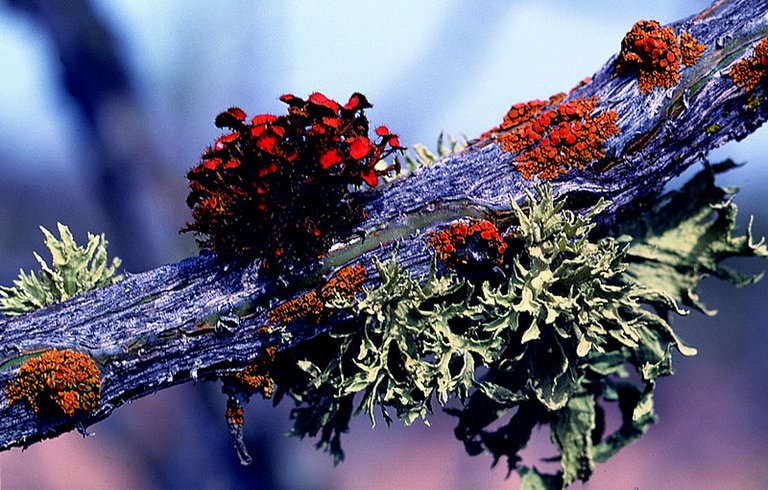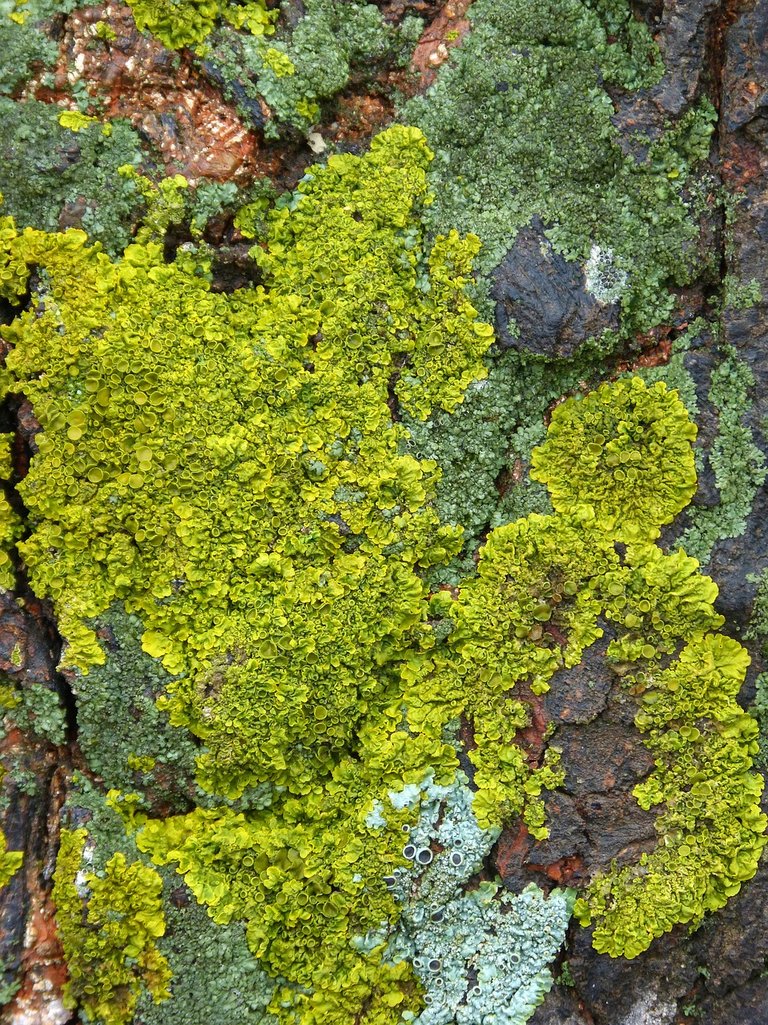Lichens - An Organism Made Up Of Several Organisms
There is a high chance that while you are going about your daily activities, you must have seen Lichens but some bird just told me that you are still in confusion to what lichens are and you are about to ask me what they are actually. Let me quickly do justice to that.
You can find these colony of organism everywhere except the deep open ocean. They are available on mountain tops, wood, and in every continent including Antarctica. You were expecting me to not mention Antarctica, well this is an exception because they can survive below freezing point, as low as -40oC and if you have worries about them growing in desert regions, then worry no more because they can survive years without water and tiny water vapor is enough to help them photosynthesize.
When I mention Lichen, I didn't remember to tell you that it is not a single organism and this is kind of weird but not completely since there are a lot of organisms that are not singular. In the case of lichen, it is made up of 3 to 4 composite organisms from different kingdoms of life in one unit. For an organism to be refered to as a lichen, it must have a Mycobiont (Myco - Fungi, Biont - Living) and a Photobiont (Photo - Sunlight Biont - Living) which means for that organism to see in your garden or in the woods to be regarded as a lichen, it must have one fungus and one photosynthetic organism.
You might notice that the majority of the lichen you see have more of a cup-like fungus compared to other type of fungi because its fungus are majorly Ascomycete (cylindrical sacs) up to 98% compared to Basidomycete (Non-cuplike shape). Unlike when fungi would grow on dead organisms to produce sugar, fungi in lichens do not need to grow on dead organisms rather they found a way millions of years ago to grow by feeding on the sugar produced by the photosynthetic organisms in their colony.
When it comes to the photobiont that make up the colony, they are either algae, and/or cyanobacteria and they all work together to live as one organism. Asides from this organisms, scientists have realized that about 20% to 50% of Lichen also have yeast in their colony, so if you spot one, you are still on point my friend. So in this corporation the photobiont does the food production while the mycobiont produce structure, and insulation for the photobiont.
When organisms require one another to survive, and come together to form a colony, we might think that they may have very little species types but with lichens, there are about 20 thousand different species and they can exist Crustose (found on rocks, pavements, and trees) which are flat and in 2Ds manner, they can exists as Foliose Lichens which are flat-leaf-like in shape and can be found on trees, and fruticose lichens which are 3D like in nature. They are not flat and they include Raindeer lichens, and Beard Lichens.
How do these organism made up of 2 to as many number organisms reproduce? This is a question that I asked myself when I was reading about them after seeing one on my sidewalk. they reproduce asexually through fragmentation where they breakout of themselves, production of Isidium which are outgrowth of the lichen which contains all the part of the lichen, and through Soralium which produces and release soredia which are very small packets that can colonize new territory when released. These wonderful organism can reproduce itself sexually as well but this is very difficult to perform and the mycobionts are usually the ones that reproduces.
This organisms can live everywhere except for places where sunlight cannot penetrate because they need sunlight to produce photosynthesis which serve as food. They cannot live in the deep ocean, and surprisingly enough they cannot live in polluted areas especially in urban areas.
https://www.sciencedirect.com/topics/medicine-and-dentistry/lichen-disease
https://www.fws.gov/story/2023-12/lichen-what-fungus-it
https://www.fs.usda.gov/wildflowers/beauty/lichens/about.shtml
https://www.sciencedirect.com/topics/immunology-and-microbiology/lichen-organism
https://www.britannica.com/science/lichen
https://www.fs.usda.gov/wildflowers/beauty/lichens/biology.shtml
https://britishlichensociety.org.uk/learning/what-is-a-lichen



Thanks for your contribution to the STEMsocial community. Feel free to join us on discord to get to know the rest of us!
Please consider delegating to the @stemsocial account (85% of the curation rewards are returned).
Thanks for including @stemsocial as a beneficiary, which gives you stronger support.